- Softcover: 440 Seiten
- Verlag: Schweizerbart’sche, E.
- Autor: Jordi Catalan
- Auflage: 1. Aufl., erschienen am 23.12.2009
- ISBN-10: 3-510-47064-8
- ISBN-13: 978-3-510-47064-8
- Größe und/oder Gewicht: 25,0 x 16,0 cm
Patterns and factors of biota distribution in remote European mountain lakes
Autoren: Jordi Catalan96,00 €

HONIGHÄUSCHEN (BONN) – Remote mountain lakes are defined as those situated above the tree-line. There are over 50,000 across Europe, occurring from the high arctic to the south of Spain. These lakes have high ecological and environmental value and as the focal points of mountain landscapes, they support unique plant and animal communities. As headwater catchments for European water supplies they are excellent sensors of environmental change for entire mountain environments. However, although they are generally perceived to be in pristine condition, they are threatened by acid deposition (S and N), by the deposition of persistent organic pollutants (POPs) and by trace metals, and they are very sensitive to greenhouse gas-forced climate change. The central objective of the EU project, EMERGE (European Mountain lake Ecosystems: regionalisation, diagnostic; socio-economic evaluation) was to comprehensively evaluate the status of remote mountain lake ecosystems across Europe. At its core, EMERGE oversaw a biological survey carried out on more than 350 lakes covering most European ranges from Finland to Spain, and from Scotland to Slovakia. The survey used common sampling protocols and a large number of biological groups and environmental variables were measured, including water column, littoral and sediment habitats. This special issue presents a number of studies which examine the planktonic environment, the littoral and benthic zones, the indicative value of lake sediments for assessments of ecological status and several integrated regional assessments. The planktonic habitat – Sub-arctic lakes of Finnish Lapland were classified using phytoplankton species distribution with the classification subsequently linked to pH and conductivity gradients. A biogeographical characterisation of phytoplankton assemblages revealed three key algal groups with the potential to be used for ecological characterisation of remote mountain lakes. An examination of the actors shaping diversity patterns of pelagic rotifers in Pyrenean mountain lakes highlighted the presence of littoral species in pelagic rotifer assemblages, the importance of carbon flux in the lakes for rotifer diversity patterns, and the existence of increasing environmental restrictions in altitude. The structure of the pelagic food webs in mountain lakes across Europe during the ice free season was examined focusing, in particular, on the microbial loop. Littoral and benthic organisms – Littoral oligochaetes in the Pyrenees were found to vary according to both altitude and fine substrate dominance. An examination of local and regional species richness of chironomid communities in alpine lakes in the Retezat National Park, Romania, concluded that use of species richness estimators can facilitate field surveys by providing a comparable basis for redirecting sampling to taxon-rich sites. The value of epilithic diatoms as indicators of water quality in Finnish Lapland was explored – these were controlled by local limnological factors, including conductivity, pH and alkalinity. Analysis of the benthic diatom flora from high mountain lakes in the Rila Mountains (Southwestern Bulgaria) showed significant correlation between species diversity and the main chemical gradients – pH, alkalinity and conductivity. The diversity and distribution patterns of benthic invertebrates in six European mountain regions were explored indicating strong patterns in species diversity between Lake Districts with significant proportions of assemblage variance explained primarily by water chemistry but also by altitude and geography. The diagnostic value of lake sediments to evaluate ecological status – A pan European study of Cladocera remains showed that the species assemblages in mountain lakes are primarily determined by bio-geographical factors with physical, chemical or trophic conditions appearing to explain very little of the variation independent of geographical factors. A comprehensive comparison between the pigment composition of a surface sediment samples and contemporary catchment and limnological variables showed a clear distinction between pristine lakes (Pyrenees), polluted sites (Tatras and Central Southern Alps) and more nutrient-rich lakes (the Julian Alps and Greenland). Biological and geochemical proxies from the sedimentary record of the high alpine lake Bubreka in the Rila Mountains, were used to reconstruct palaeoecological conditions and to determine the phases in the ontogeny of the lake. A sediment core from Lacu Negru in the Retezet National Park, Romania, was analysed providing a record of atmospherically deposited contamination and biological change. Integrated regional studies – An examination of the response of lakes to major environmental gradients in the Alps demonstrated that a geological gradient controls the composition of phytobenthos, macrozoobenthos, and sedimentary diatoms and chironomids, while the composition of algal pigments in surface sediment is primarily driven by the relatively short trophic gradient. A study of high altitude lochs in Scotland found that species composition differed between low alkalinity lakes with sparse soil coverage at higher altitudes from lakes with high organic levels and high proportions of peaty soils in the catchments. Thermistors were deployed at the Scottish sites and data showed that lake surface water temperatures fluctuate coherently in response to climatic forcing which suggests that daily mean lake temperatures can be readily upscaled. A study investigating the use of satellite images for land cover classification identified 10 land cover classes related to lithology and soil cover that could be used in lake regionalisation studies and model upscaling in remote mountain areas. The Europe-wide survey documented in the papers of this volume is unique both in terms of its geographical scope and the breadth of data collected, by providing a baseline for future mountain lake research in Europe. This special issue is of interest to all those engaged in environmental research in mountain regions, aquatic ecologists everywhere and policy makers and those tasked with implementing freshwater management strategies.
Über „Patterns and factors of biota distribution in remote European mountain lakes“
Das vorliegende Sachbuch zu Themen aus Umwelt und Natur „Patterns and factors of biota distribution in remote European mountain lakes“ wurde erarbeitet und verfasst von Jordi Catalan. Dieses Sachbuch erschien am 23.12.2009 und wurde herausgegeben von Schweizerbart’sche, E..
Bücher wie „Patterns and factors of biota distribution in remote European mountain lakes“ sind im Onlineshop des Honighäuschens bestellbar. Online bestellte Fachbücher zur Imkerei und zu anderen Themen der Umwelt und des Artenschutzes sind zu den üblichen Öffnungszeiten auch direkt im Buchladen Bundesamt für magische Wesen in Bonn, der Stauhauptstadt von Nordrhein-Westfalen abholbar und werden auf Wunsch verschickt.
Das Thema Bienensterben, Rückgang von Insekten und allgemeines Artensterben ist in aller Munde und das Honighäuschen als frühere Bioland Imkerei hat sich von Anfang an daran beteiligt. Mehr als 35 Jahre Imkereierfahrung nahmen ihren Anfang 1982 mit den ersten eigenen Bienen.
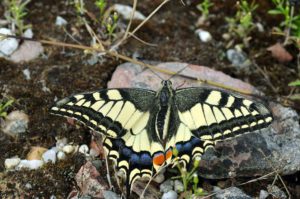
Der zehnjährige Junge, der 1977 einem Hamburger Imker über die Schulter schaute; der Fünfzehnjährige, der mit der Imkerei in Zeiten begann, in denen es noch keine Varroamilbe gab; der achtzehnjährige Fahrschüler, der lernte, dass man die Windschutzsscheibe seines Autos nach einer längeren Fahrt von Insekten säubern muß; der zwanzigjährige Student, der für seine Bienen einen Platz in Bonn suchte; der dreißigjährige Berufsimker, der seinen Bienen quasi eine Gutenachtgeschichte erzählte und sich den Kopf zerbrach, wie man die Umwelt mit ihren Bienen, Wespen, Schmetterlingen und andere blütenbesuchenden Insekten vor den Machenschaften der Agrargiftindustrie und der Gleichgültigkeit agrarindustriehöriger Politiker schützt; der Imker, der nicht nur auf dem Weihnachtsmarkt Bonn die Öffentlichkeit suchte, um bei Führungen an den Bienen auf dem Dach der Bundeskunsthalle zu erleben, dass Kinder (und deren Helikoptermuttis!) Angst vor Schmetterlingen hatten, bis hin zum Begleiter von Forschungsprojekten zu den Riesenhonigbienen Nepals oder den Killerbienen Afrikas, stellt fest, dass etwas sehr im Argen liegt in unserem Umgang mit der Umwelt.
Es sollte jedem bewußt sein, dass die Haltung „Natur ja, aber bitte woanders!“ nicht in Ordnung ist.
Die wunderschöne Welt der Natur
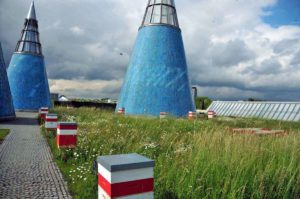
In unserem Online-Buchshop finden Sie viele Bücher wie „Patterns and factors of biota distribution in remote European mountain lakes“, die Ihnen die fantastische Welt der Bienen, Wespen, Ameisen, Hornissen und Schmetterlinge sowie anderer Insekten näherbringen.
Aber nach wie vor stehe ich Ihnen auch gern zu einem Gespräch oder zu einer Beratung im Umgang mit Bienen, Wespen, Hornisse, Wildbienen und Hummeln zur Verfügung, wenn Sie Fragen haben. Besuchen Sie uns in Bonn im Bundesamt für magische Wesen.
Und natürlich gibt es auch weiterhin Honig, Bienenwachskerzen und Met bei uns und zwar das ganze Jahr – nicht nur zu Weihnachten.
| Gewicht | 810 g |
|---|---|
| Größe | 25 × 16 cm |
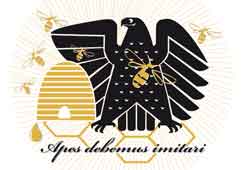

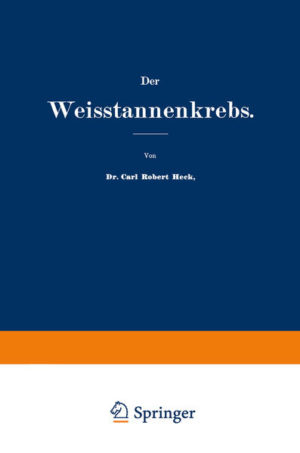

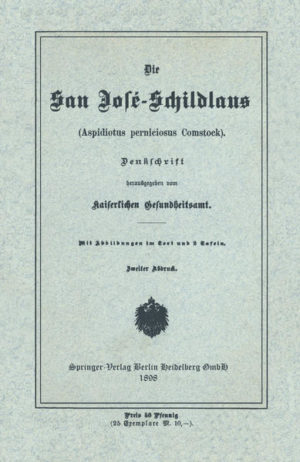
Bewertungen
There are no reviews yet